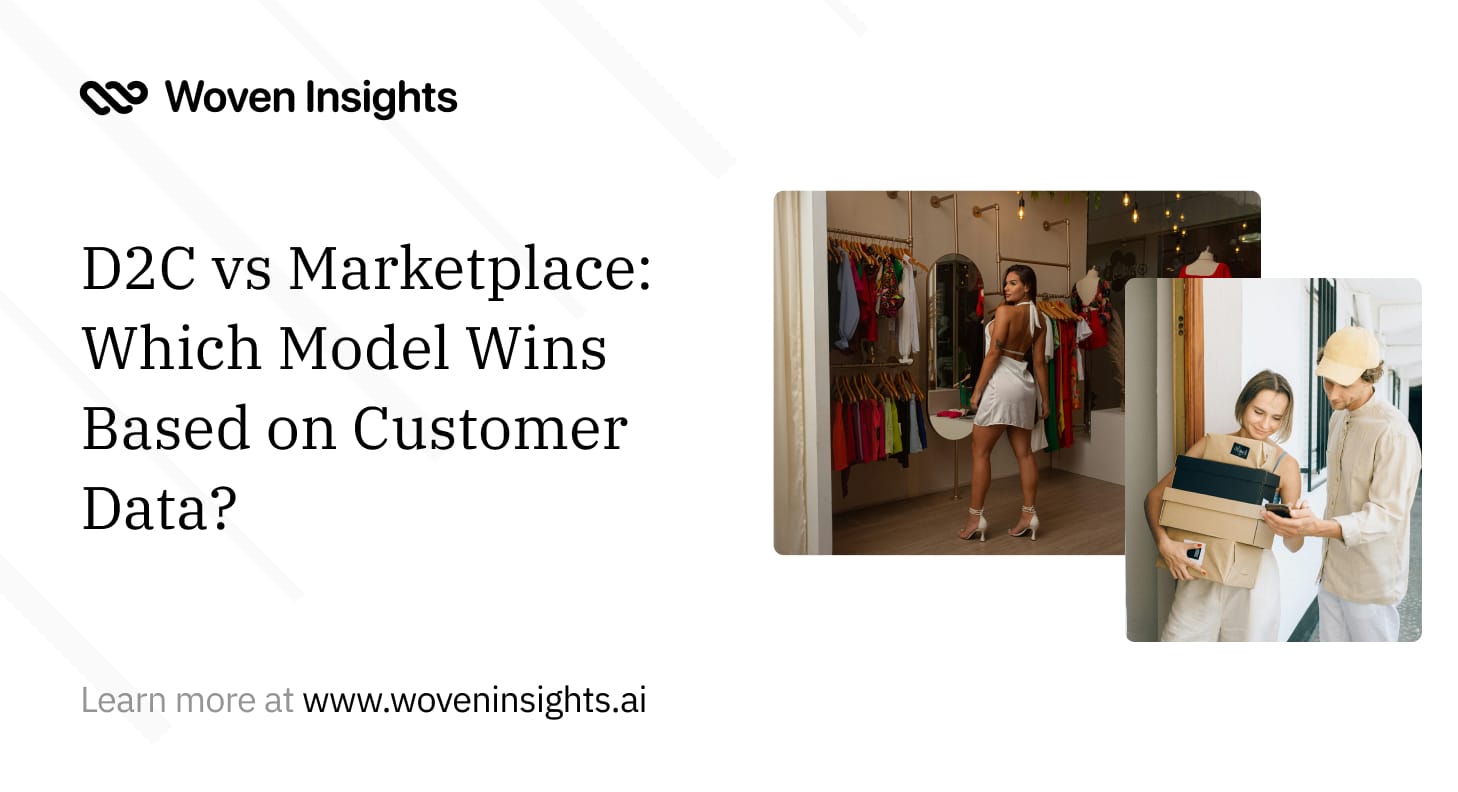D2C vs Marketplace: Which Model Wins Based on Customer Data?
D2C or marketplace, what drives better customer outcomes? Explore what the data says about both models, from loyalty to profitability, in today’s fashion landscape.

For today’s fashion brands, the choice between selling Direct-to-Consumer (D2C) or through marketplaces is no longer simple. Both models offer opportunities and tradeoffs. Some brands thrive with tight D2C experiences, others scale quickly on marketplaces, while many pursue a hybrid approach.
But which model actually delivers better customer outcomes based on the data?
As consumer behavior evolves, customer data provides clear signals about how shoppers engage differently with D2C vs. marketplace channels. Understanding these patterns helps brands shape smarter sales strategies, optimize their tech investments, and build loyalty where it matters most.
What the Customer Data Reveals: D2C vs Marketplace
1. Customer Lifetime Value (CLV)
D2C:
- Higher long-term CLV due to stronger brand connection and direct communication.
- Easier to build loyalty through memberships, perks, and personalized content.
Marketplace:
- Lower CLV on average, with many customers shopping for price or convenience.
- Harder to foster loyalty, as brand is one of many competing on the platform.
2. Acquisition Cost (CAC)
D2C:
- Higher CAC, requires ongoing investment in digital marketing, SEO, and content.
- Brands must build and maintain their own audience.
Marketplace:
- Lower CAC; platform provides built-in traffic and discoverability.
- Great for exposure and capturing new segments.
3. Conversion Rate
D2C:
- Conversion depends heavily on brand strength, UX, and trust signals.
- Average fashion D2C conversion rates: 2-3%.
Marketplace:
- Higher conversion due to trust in platform, reviews, and ease of purchase.
- Many marketplaces deliver 4-7% conversion in core categories.
4. Returns & Satisfaction
D2C:
- Lower returns when sizing, product education, and brand storytelling are clear.
- More flexibility to manage post-purchase experience.
Marketplace:
- Often higher return rates, as shoppers may “test and return” with less brand commitment.
- Limited brand control over platform return policies.
5. Data Ownership
D2C:
- Full access to customer data: purchase history, behavior, preferences.
- Enables advanced personalization and lifetime marketing.
Marketplace:
- Limited access to customer data, platform owns the relationship.
- Harder to build a CRM or segment audiences.
Conclusion
There’s no single winner, each model plays a different role. Customer data shows that D2C excels in loyalty and lifetime value, while marketplaces drive efficient acquisition and scale.
For most fashion brands in 2025, the smartest strategy is a balanced, data-driven mix:
Use marketplaces for discovery and new customer growth.
Build D2C for long-term brand connection and profitability.
About Woveninsights
Woveninsights is a comprehensive market analytics solution that provides fashion brands with real-time access to retail market and consumer insights, sourced from over 70 million real shoppers and 20 million analyzed fashion products. Our platform helps brands track market trends, assess competitor performance, and refine product strategies with precision.
Woveninsights provides you with all the actionable data you need to create fashion products that are truly market-ready and consumer-aligned.
Click on the Book a demo button below to get started today.

